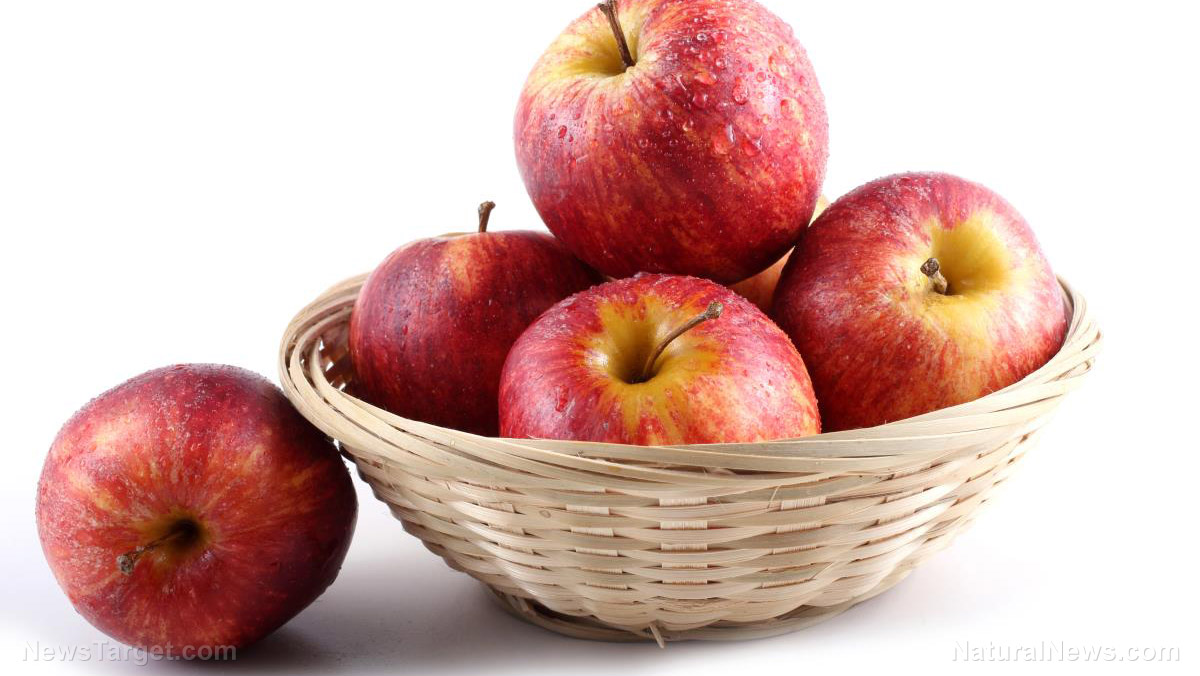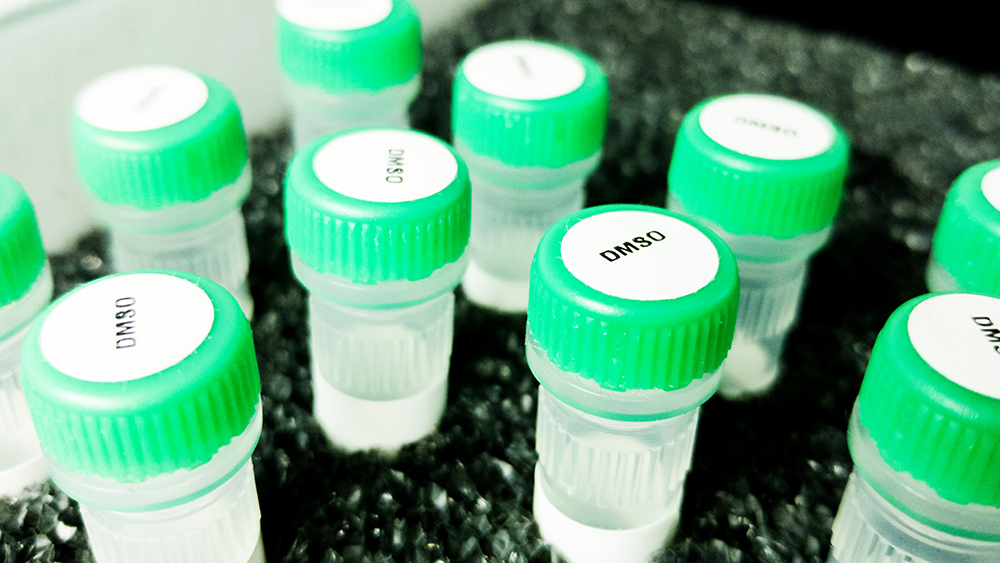Apples: A nutritional powerhouse with ancient roots
05/29/2025 / By Laura Harris

- Apples originated in Central Asia around 6,500 B.C., with wild ancestors like Malus sieversii thriving in present-day Kazakhstan. They became a prized food among ancient Greeks and Romans, who spread them across Europe through trade and cultivation. Later, European settlers further expanded their reach.
- The English introduced apples to North America in the 17th century, while Spanish missionaries also played a role in their propagation across the continent. Today, apples are cultivated worldwide, with China leading global production, followed by the United States, Poland, Turkey and Italy.
- Apples are packed with fiber, vitamin C, potassium and antioxidants like quercetin. Regular consumption supports heart health, aids digestion, helps regulate blood sugar and may even reduce the risk of certain cancers.
- Conventionally grown apples frequently appear on the “Dirty Dozen” list due to pesticide residues. To minimize exposure, experts recommend choosing organic apples or thoroughly washing conventional ones before eating.
- Apples feature prominently in both sweet and savory dishes worldwide – from classic desserts like apple pie and strudels to savory pairings like roasted pork with apples or spiced chutneys. They’re also processed into juices, ciders, vinegar and dried snacks, showcasing their remarkable adaptability.
Few fruits have permeated human culture and nutrition as deeply as the apple. Revered for its crisp texture, refreshing taste and wide array of health benefits, the apple is more than just a snack – it is a nutritional cornerstone. From its ancient origins to its modern-day culinary versatility, the apple remains a symbol of both tradition and wellness.
Brief history of apples
The apple (Malus domestica) has a storied past dating back thousands of years. Wild ancestors of today’s apples originated in the mountainous regions of Central Asia, particularly in Kazakhstan, where the wild apple, M. sieversii, the progenitor of modern varieties, still grows.
The ancient Greeks and Romans cherished apples for their taste and medicinal uses, with the Romans later bringing apples to England. Through trade, apples spread across Europe, where they were selectively bred for better flavor and resilience. In the 17th century, English settlers and Spanish missionaries introduced apple seeds to North America, leading to the widespread cultivation of orchards.
Today, apples are grown worldwide, with China, the United States and Poland leading global production.
Nutritional benefits of apple
Apples are a low-calorie fruit packed with essential vitamins, minerals and bioactive compounds. A medium-sized apple (about 182 grams) contains:
Macronutrients
- 95 kcal of calories
- 25 g (including 4.4 g of fiber) of carbohydrates
- 0.5 g of protein
- 0.3 g of fats
Micronutrients and phytonutrients
- 14 percent of the daily value (DV) for vitamin C, which supports immune function and skin health
- 6 percent of the DV for potassium, which is needed for heart and muscle function
- 5 percent of the DV for vitamin K, an essential nutrient for blood clotting and bone health
- Insoluble and soluble fiber to aid digestion, support gut health and help regulate blood sugar levels
- Polyphenols and flavonoids such as quercetin, catechin and chlorogenic acid, all powerful antioxidants that combat oxidative stress and inflammation.
Here are the health benefits of eating apples:
- Heart health – Studies associate apple consumption with reduced LDL cholesterol and lower risk of cardiovascular disease due to their fiber and polyphenols.
- Digestive wellness – The pectin in apples acts as a prebiotic, promoting the growth of beneficial gut bacteria.
- Blood sugar regulation – The fiber content of apples slows sugar absorption, making apples a diabetes-friendly snack.
- Weight management – Their high water and fiber content promotes satiety, reducing overall calorie intake.
- Reduced cancer risk – Antioxidants in apples may help lower the risk of certain cancers, including colorectal and lung cancer.
Are apples safe?
Apples are a nutritious choice, but concerns about pesticide residues and contaminants are valid. They frequently rank on the Environmental Working Group’s “Dirty Dozen” list, which highlights produce with the highest pesticide levels. Common residues include chlorpyrifos (a neurotoxin banned in many countries), diphenylamine (a post-harvest chemical) and thiabendazole (a fungicide). While peeling apples can reduce pesticide exposure, it also removes fiber and nutrients. The best solution is to choose organic apples, which are cleaner, safer and more nutritious than conventional apples. (Related: Organic apples make the perfect health food.)
For people who are unable to find organic options, thorough washing, rubbing and scrubbing can help reduce (but not eliminate) pesticide residues. Some studies have also detected trace amounts of heavy metals like arsenic, lead and cadmium in apples due to soil contamination – though these typically fall within regulated safety limits.
Culinary uses of apples
Apples are endlessly versatile and suit sweet and savory dishes, such as:
Sweet dishes
- Apple pie (USA, Europe) – A classic dessert with spiced, baked apples.
- Tarte tatin (France) – An upside-down caramelized apple tart.
- Apple strudel (Germany/Austria) – A flaky pastry filled with spiced apples and raisins.
- Apple crumble (United Kingdom) – Baked apples topped with a buttery oat crust.
- Caramel apples (North America) – Apples coated in caramel or chocolate.
Savory dishes
- Pork with apples (Global) – A traditional pairing in European and American cuisine.
- Waldorf salad (USA) – Apples, celery, walnuts and mayonnaise dressing.
- Apple chutney (India, UK) – A tangy-sweet condiment for curries and meats.
Beverages and other uses
- Apple juice / cider (fermented or fresh)
- Apple vinegar – Used in dressings and detox drinks.
- Dried apple slices – A healthy snack alternative.
Apples are undeniably one of nature’s most balanced superfoods – nutrient-dense, hydrating and packed with disease-fighting antioxidants. While pesticide concerns exist, choosing organic (when possible) and washing apples thoroughly minimizes risks.
This story is not medical advice and is not intended to treat or cure any disease. Always consult with a qualified naturopathic physician for personalized advice about your specific health situation or concern.
Explore more about the health benefits of superfoods and other natural ingredients at NaturalNews.com, your trusted source for wellness insights and nutritional knowledge.
For cutting-edge tools to expand your understanding of natural health, try Brighteon.ai, an innovative AI model created by Mike Adams, the Health Ranger. This free, downloadable tool is designed to decentralize knowledge, bypass censorship, and empower individuals with actionable information.
If you’re passionate about nutrition, natural medicine, and uncensored discussions, visit Brighteon.com and a free speech video platform and join our vibrant communities on Brighteon.IO and Brighteon.social. Dive into open conversations about food, ingredients and holistic health today!
Watch this video to learn more about the health benefits of eating apples.
This video is from the All About Herbs channel on Brighteon.com.
More related stories:
Dried apples regulate blood sugar levels.
Organic apples can help you fight cancer.
Sources include:
Submit a correction >>
Tagged Under:
#nutrition, apples, food cures, food is medicine, food science, fruits, functional food, grocery cures, health science, ingredients, natural health, nutrients, organics, phytonutrients
This article may contain statements that reflect the opinion of the author





















